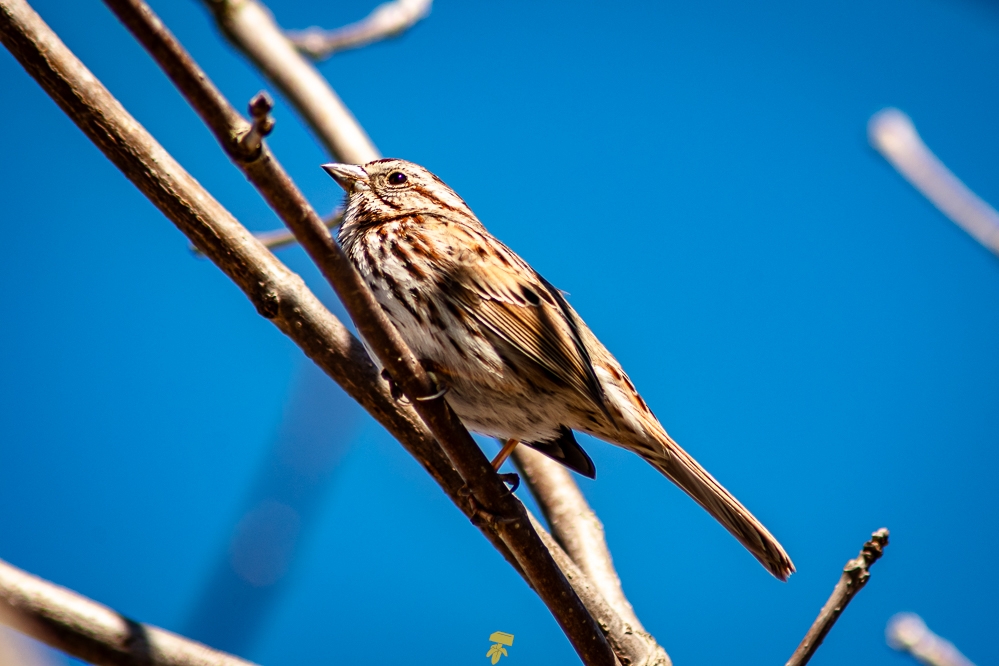Spent the afternoon birding in a spot known to be a hotspot for common and more unique feathered and flying vertebrates. Roughly 85% of the refuge consists of freshwater wetlands, attracting migrant and local species of perching songbirds, waterfowl, marsh breeders, and shore birds to the cultivated conservation area.

A warm and sunny April day with a gentle breeze, some clouds here and there, but not enough to stop the temperature from reaching nearly 70°F. Not a bad day to relax and try to shoot some birds! Today’s adventure will bring me to the Great Meadows National Wildlife Refuge in historic Concord, Massachusetts. Located between a slow-moving section of the Concord River and the popular walking and biking path that connects to Bedford, the Reformatory Branch Trail.
The Concord Unit features two small pools commonly referred to as “impoundments,” indicating that these pools are man-made rather than natural ponds. Both are drained into the neighboring river every summer, revealing nutrient-rich feeding grounds, attracting waterfowl, marsh breeders, and shore birds to the mudflats. A great diversity of birds have been recorded at the 3,600-acre refuge, nearly 300 recorded on Ebird, spanning migrant and local species.

Spotting an American Goldfinch flying near a meadow or pond in spring and summer is not uncommon around this area, nor is seeing Song Sparrow, Common Grackle, Canada Goose, Red-tailed Hawk, or Yellow-rumped Warbler… or any of the birds I saw today, though someone supposedly saw an American Bald Eagle there in the morning. The least common or likely, was spotting a Double-crested Cormorant flying by. Photographing ten unique birds along the day’s afternoon quest. Heard mallards quack, mourning doves hoo-ing, many woodpeckers pecking, and a barred owl cooking, but made no sightings.

A Great Blue Heron perched on one of several birdboxes in the impoundment closer to the viewing platform, funny watching a Red-winged Blackbird, the most common and noisiest residents of this wetland, try to enter and quickly retreat. While taking photographs of the bird that can span taller than four feet, I noticed a muskrat perched up on a small mound chewing on a piece of reed. While they will use smaller branches, muskbeavers prefer to make their huts from cattail reeds and sticks rather than trees and logs. The two small bodies of water here are surrounded by cattails and small trees, offering plenty of material to build a home.

Not much for other wildlife was seen, aside from an abundance of squirrels and chipmunks while strolling around Winter Pine Forest and a pair of Blanding’s Turtles bathing in the sun when crossing Rubis Field – a treat as they are a threatened species in the state.

Those visiting can expect to pay a small fee ($2 at the time of this visit) via an automated parking kiosk. Facilities are limited, with no office, vending machines, or drinkable water sources, but there are restrooms. The parking lot can maybe fit twenty vehicles and tends to fill up, being a popular birding and walking area. Bonus points for the three-ish story observation tower that overlooks both impoundments and the Dike Trail separating them.
Birds photographed: 10
American Goldfinch
Canada Goose
Common Grackle
Double-crested Cormorant
Great Blue Heron
Mute Swan
Song Sparrow
Red-tailed Hawk
Red-winged Blackbird
Yellow-rumped Warbler



















